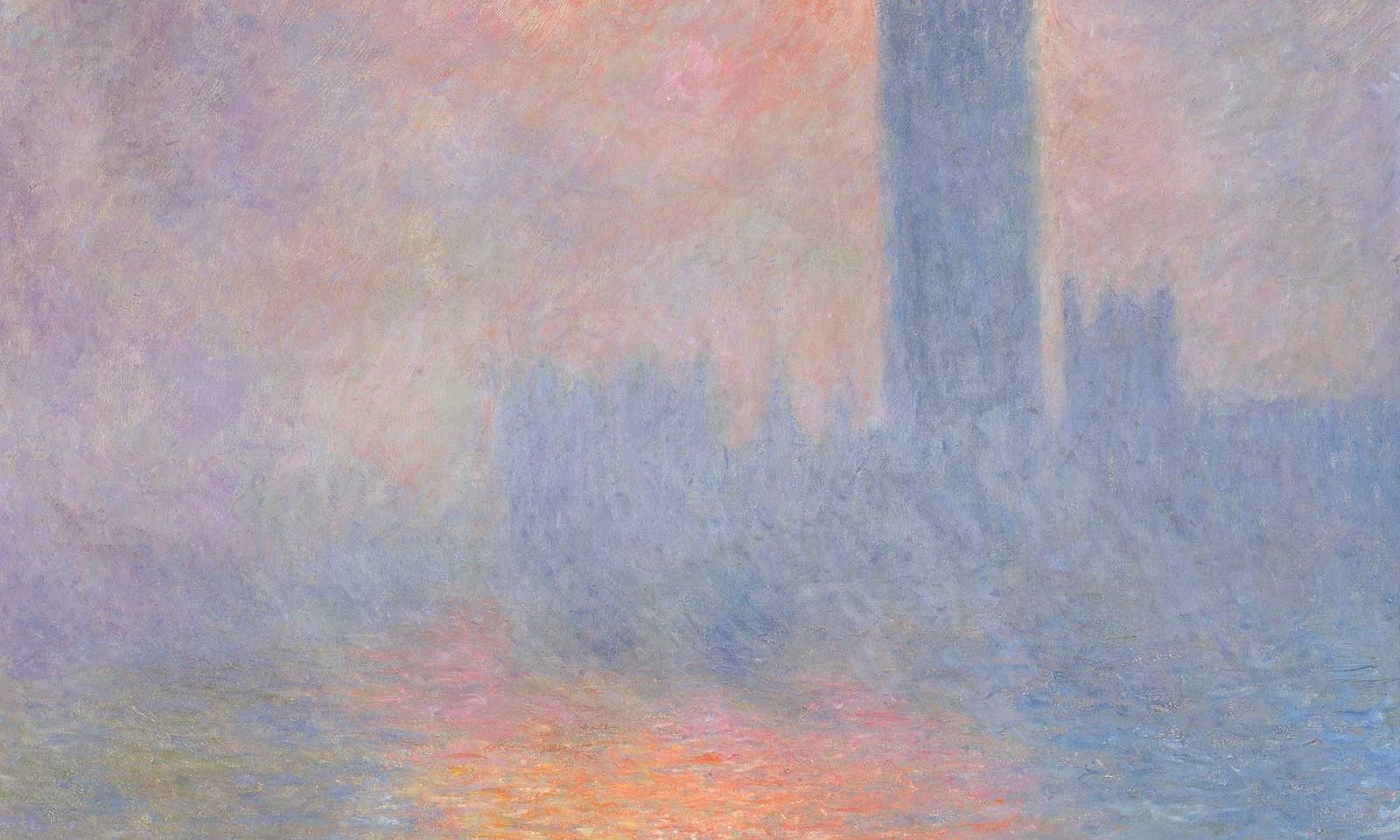Monet’s Parliament paintings include Trouée de soleil dans le brouillard (sun breaking through the fog) (1904)
Photo © Grand Palais RMN/Musée d’Orsay/Hervé Lewandowski
Claude Monet wanted to hold a London exhibition of his Thames paintings in 1905, but it was cancelled at the very last moment. This story will be told in the Courtauld Gallery’s show Monet and London: Views of the Thames (27 September-19 January 2025). Although not all the paintingswill be those which the artist had in mind, the exhibition will essentially be Monet’s London “dream” come true.
In May 1904, 120 years ago, Monet had held an exhibition to unveil 37 of his finest Thames canvases at the gallery of his Paris dealer, Paul Durand-Ruel. They were a “series” of works, depicting a trio of sites (Waterloo Bridge, Charing Cross Bridge and the Houses of Parliament) in various weathers and light conditions, mostly in heavy fog. These were done on three visits, in 1899, 1900 and 1901, and altogether he finished 94 paintings.
The 1904 Paris show was well received. Karen Serres, senior curator of paintings at the Courtauld, describes it as “cementing his reputation as France’s most important living artist”.
Following his Paris success, Monet decided to hold a similar exhibition in London. As he wrote to Durand-Ruel in December 1904, while on a visit to England: “I have always wanted to show my Londons here, for my own satisfaction.” On this short trip he made an arrangement with the London dealer Dowdeswell’s, whose elegant gallery was in New Bond Street, just a mile away from the Thames and the Savoy Hotel, where the artist had stayed and worked.
Dowdeswell’s announced the show in a letter to The Times on 18 January 1905: “May we beg leave to say that we arranged some time ago with M. [Monsieur] Claude Monet to exhibit these pictures of the Thames at our Galleries during the forthcoming spring.” Further confirmation was given in the Morning Post on 23 February: “his Thames pictures will be exhibited next month at the Dowdeswell Galleries”, with the private view on 30 March.
Monet's Le Parlement, soleil couchant (parliament, sunset) (1903)
Photo: © RecomArt-Cruse-Color
Something suddenly went wrong, and Serres has found the reason. By 7 March the Manchester Courier had reported that the artist had “decided to postpone the exhibition indefinitely”. The newspaper explained: “Monet is dissatisfied with the quality of the canvases which he intended to show, hence the postponement.”
This was a reflection of Monet’s painstaking way of working. He began a painting in front of the motif, but he would later refine the colouring in his studio. He had told a journalist in 1901: “I am never contented with my work. I let a picture go because I would work on it forever if I did not.”
In the case of the London paintings there was an additional challenge, since Monet regarded the works as a series, which could be appreciated together as an ensemble in an exhibition. He was therefore particularly anxious to make minor adjustments to some of the pictures which he had earlier presented in Paris. Being a perfectionist, he wanted to delay the show at Dowdeswell’s—and in the end it never took place.
Although Monet may have felt that his London paintings were not quite up to scratch, today’s market takes a very different view. One of the 37 works exhibited in Paris, Le Parlement, soleil couchant (1903), sold for $76m at Christie’s in 2022. It will be coming to the Courtauld exhibition, on loan from the Museum Barberini in Potsdam, Germany (the Hasso Plattner collection).
This autumn’s show at the Courtauld will bring together 19 of the 37 works from the 1904 Paris show, the largest group of Monet’s London scenes to be reassembled since then. The paintings will be returning to the British capital to a venue only 300 yards along the Thames from the Savoy.
Serres says that some good came out of the artist’s decision not to proceed with his London show. “Monet moved on and abandoned the idea, partly to devote more efforts to painting his garden in Giverny. London lost out, but at least we now have his Water Lilies.”

